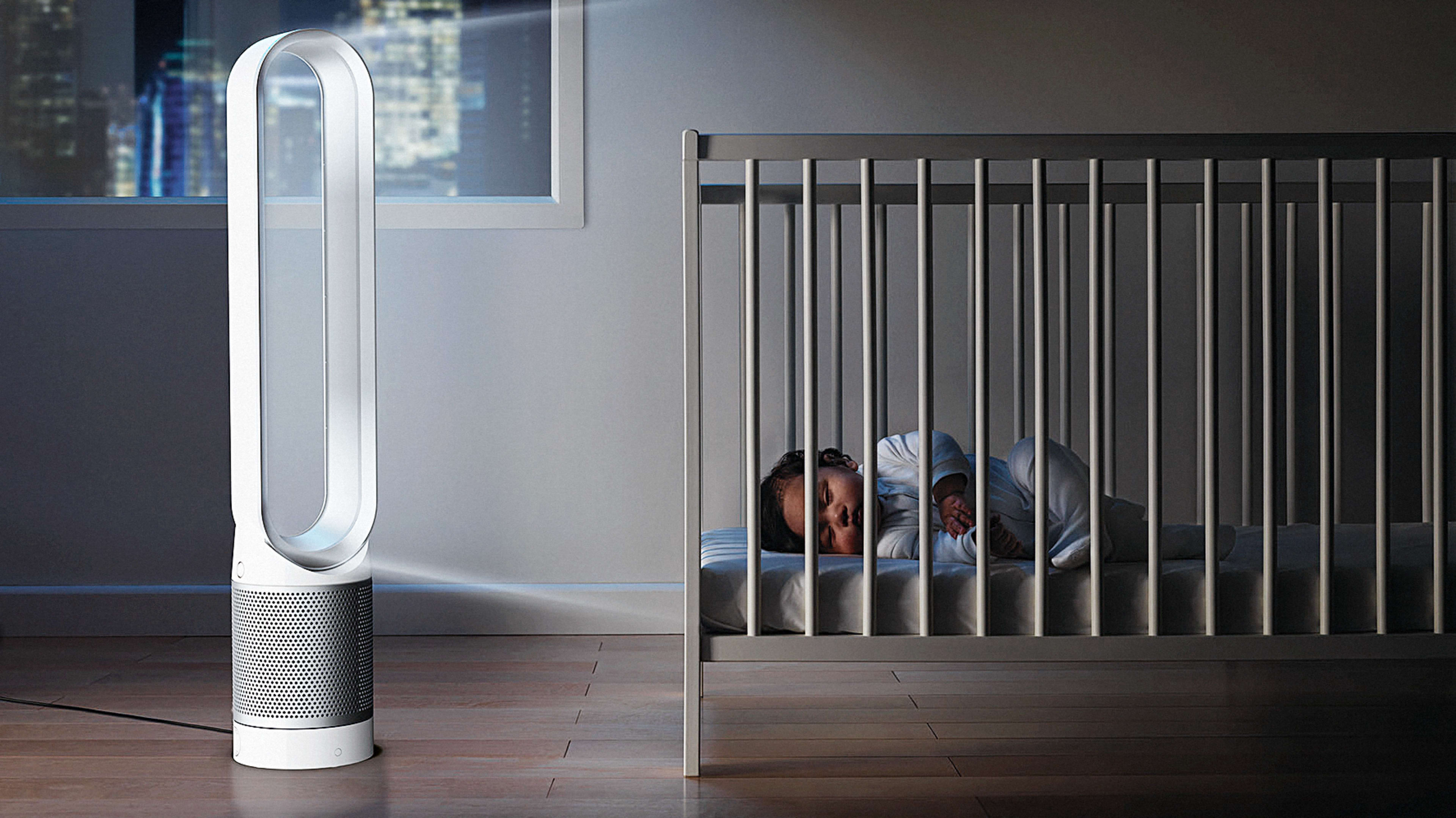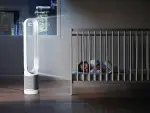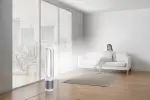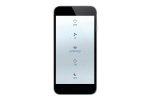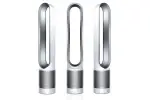Last year, Dyson released an autonomous robotic vacuum called the 360 Eye. Complete with a companion mobile app for iOS and Android called Dyson Link, the smart robot was the company’s first foray into connected technology and the Internet of Things. But it was, and remains, available only in Japan. Now, the company is unveiling another connected product, and this one is available in the U.S.
The Dyson Pure Cool Link purifier fan aims to tackle the problem of indoor air pollution. According to the EPA, the air inside a home can be up to five times worse than the air outside, contaminated with everything from toxic fumes to mold spores. The new $500 purifier uses Dyson’s patented Glass HEPA filtering technology to remove 99.97% of tiny pollutants and allergens from the air and captures them in the filter. But where the product distinguishes itself is with its smart sensors that monitor a home’s air quality and display it inside the new and improved Dyson Link App.
“We want to believe with any purifier that it’s cleaning the air in your home,” says Sean Hopkins, a reliability engineer at Dyson. “However, to be more effective and better relay that information, it’s always better to give a visual display of that, and the easiest way is with an app.”
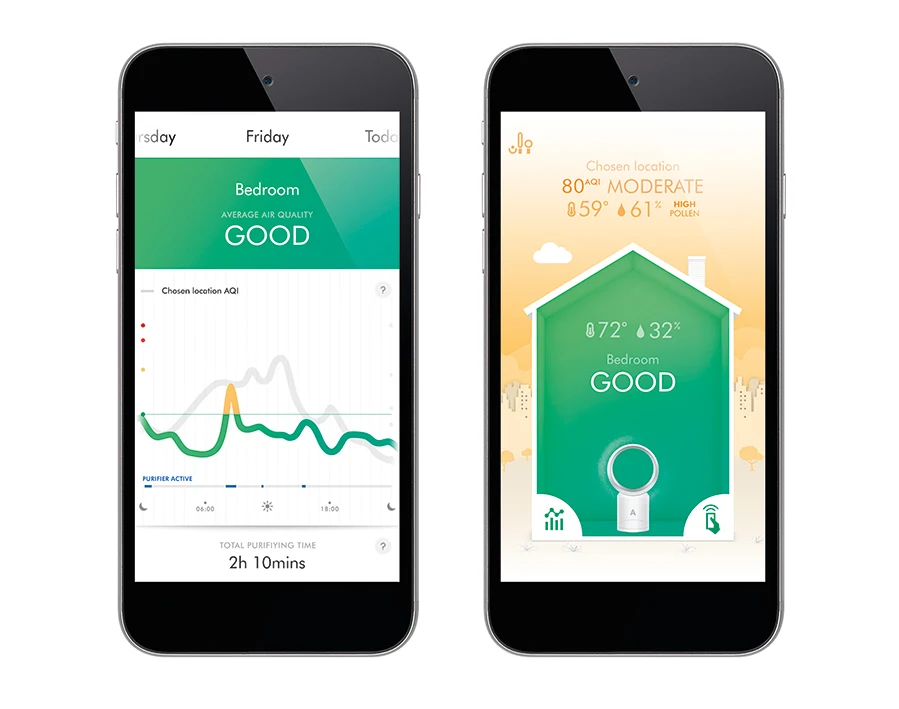
Inside the app, users can keep track of in-home pollution remotely and see how air quality changes over time with their own activities, like cooking or painting. In this way, the app does more than just educate; it can encourage healthier behavior. “We first give people the understanding of their environment, and then the tools they need to improve it,” says Tom Bennett, Dyson’s head of environmental control.
The app needed to be intuitive and work without a lot of language, so to give users a quick snapshot of their home’s air quality, designers used the universal traffic light color system of red, yellow, and green to denote poor, medium, and good air quality. “When tested, people understood this concept immediately,” says Bennett. “We also carried out glance-ability trials, whereby we ask an individual to glance at something and ask them to tell us what they think it means.”
The design process took two years, but could pay off massively if this becomes the jumping-off point for a Dyson smart-home ecosystem.
“The way technology is moving is toward whole-home connectivity,” Hopkins says. “It only makes sense for us and any other consumer product manufacturer to start moving in [that] direction.” So in 2014, the company began a massive brand expansion: It tripled the size of its engineering team, broke ground on a new $400 million technology campus, and invested $8 million in a robotics lab. As Matthew Shaer observed in a recent Co.Design piece, “Dyson might no longer be known as a cutting-edge appliance company, but as a cutting-edge technology company, full stop.”
What’s taken Dyson so long to break into the Internet of Things? Perhaps the company’s high standards for its products. It’s been known to test new ideas stringently until they’re perfect; the 360 Eye robot took 15 years to come to fruition. But also, it seems Dyson has been waiting in the wings, watching how the Internet of Things market develops before stepping into the ring.
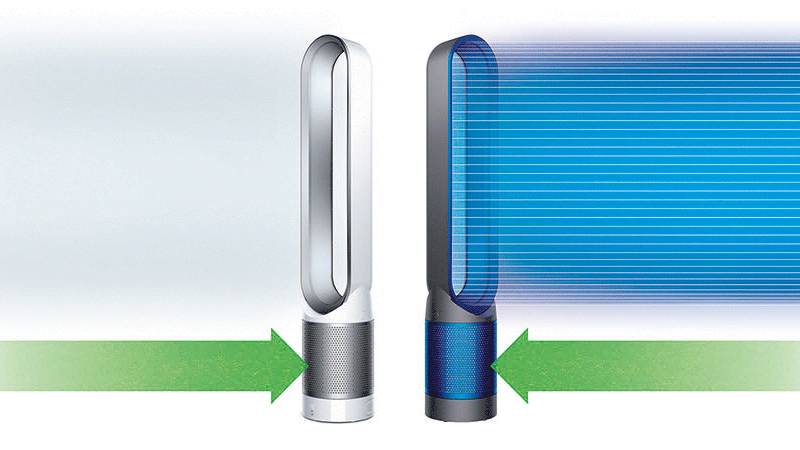
“Recently we found an egg tray that allows you to see when the eggs are expiring,” Hopkins says with a sarcastic chuckle. “We don’t want to go that route where we just have apps that are connected for the hell of it. It’s more about providing consumers with reassurances the product is doing exactly what it says it’s going to be doing, and at the same time giving proof that by buying Dyson, we’re actually doing something positive for the health of their home.”
Whether Dyson’s connected ecosystem would be open or closed is still undecided, Hopkins says. But he didn’t mince words: The Dyson Link Purifier is the tip of the iceberg. “We definitely do have future products coming out that will be connected,” he says. “As we move forward, the options for connectivity will start to increase.”
Recognize your brand’s excellence by applying to this year’s Brands That Matter Awards before the early-rate deadline, May 3.
